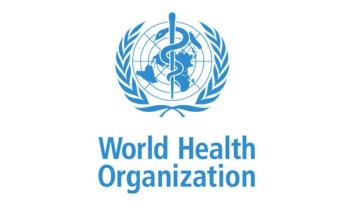A new CDC analysis of national surveillance data from October 2020 through September 2024 found that COVID-19 activity in the United States has shown consistent seasonal peaks in late summer (July–September) and winter (December–February), with dominant periodicities of approximately 26 and 52 weeks.1
Researchers examined more than four years of SARS-CoV-2 test positivity alongside genomic surveillance of spike protein S1 sequences, identifying a negative correlation between test positivity and antigenic diversity (ρ = −.30; p<.001). Investigators concluded that cycles of viral evolution and diversity are linked to case surges and that monitoring these patterns may improve forecasting and preparedness for future waves.1
The authors noted, “Because vaccine-induced neutralizing antibodies typically wane within 3–6 months, the biannual COVID-19 seasonality highlights the importance of a 2-dose vaccine schedule for older adults and persons with moderate or severe immunocompromise, who are at elevated risk for severe infection.”1
Study limitations included reliance on Fourier analysis, variability in laboratory reporting and genomic sequencing, and changes in testing behaviors such as declining screening and increased at-home testing. Findings also reflected national and regional patterns, which may not capture local differences in transmission.1
At its June 2025 meeting, the Advisory Committee on Immunization Practices (ACIP) reviewed national COVID-19 burden estimates from the 2024–25 season, including 9.8–16.1 million illnesses, 270,000–440,000 hospitalizations, and 32,000–51,000 deaths. Hospitalization rates were highest among infants under 6 months and adults over 65, and one in four hospitalized children required ICU care, with 89% unvaccinated. Reflecting these epidemiologic trends, ACIP shifted from universal to targeted vaccination recommendations: two annual doses for adults ≥65, routine vaccination for adults, and shared clinical decision-making for children.2
The FDA authorized a monovalent JN.1-targeted vaccine for the 2025–26 season, and CDC surveillance data confirmed continued protection against hospitalization and death despite waning effectiveness. Vaccine safety monitoring reaffirmed a favorable profile, with only rare, mostly self-limiting myocarditis cases reported.2
What You Need To Know
CDC surveillance shows COVID-19 peaks consistently in late summer and winter.
ACIP recommends two annual vaccine doses for adults ≥65, with targeted guidance for other groups.
Stratus and Nimbus variants are driving late-summer cases, highlighting the need for vaccination and prevention ahead of fall.
Clinicians are also preparing for the fall respiratory virus season as schools reopen. Sharon Nachman, MD, division chief of pediatric infectious diseases at Stony Brook Children’s Hospital, reported that the Stratus and Nimbus variants are now dominant in the United States. Although not linked to more severe illness, these variants are driving an increase in infections with symptoms such as sore throat and hoarseness. Nachman emphasized that widespread transmission could generate additional mutations heading into winter, and she urged families to reduce spread by staying home when symptomatic. Addressing vaccine hesitancy, she stressed that mRNA vaccines contain no thimerosal or live virus, and advised families to consider vaccination based on both individual and household risk, particularly for older adults, those with lung disease, and multigenerational households.3
Together, these findings underscore the importance of timing vaccination strategies to align with predictable COVID-19 surges and maintaining targeted protection for vulnerable populations as the US enters another respiratory virus season.
References
1.Pingali C, Yankey D, Elam-Evans LD, et al. Vaccination Coverage Among Adolescents Aged 13–17 Years — National Immunization Survey-Teen, United States, 2024. MMWR Morb Mortal Wkly Rep 2025;74:466–472. DOI: http://dx.doi.org/10.15585/mmwr.mm7430a1
2.CDC. Advisory Committee on Immunization Practices (ACIP) - Day 1 of 2. June 25, 2025. Accessed August 22, 2025. https://www.cdc.gov/acip/meetings/index.html
3. Nachman S, Abene S. COVID-19 Variants and Vaccine Decisions Heading Into Fall. Contagion. August 12, 2025. Accessed August 22, 2025. https://www.contagionlive.com/view/covid-19-variants-and-vaccine-decisions-heading-into-fall




























































































































































































































































































